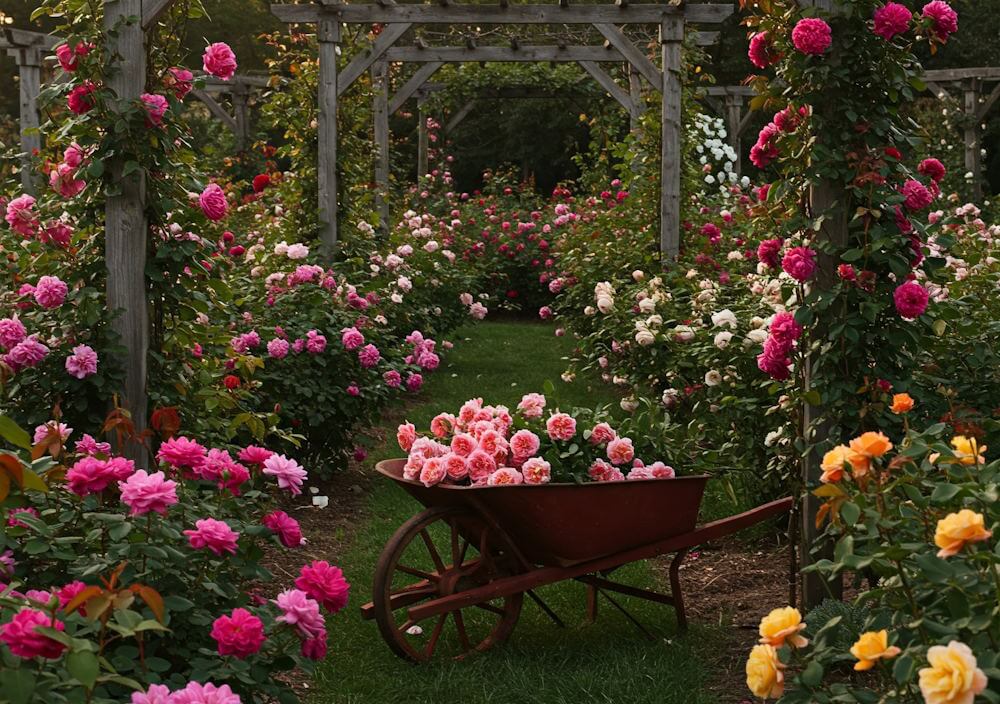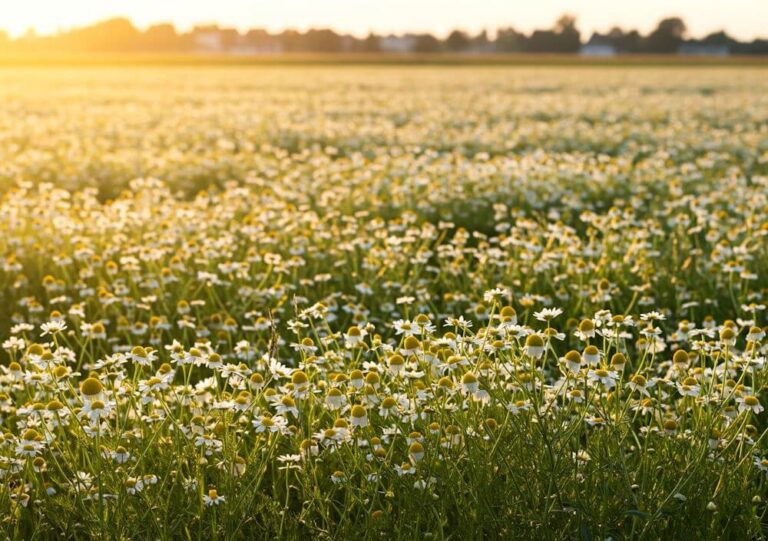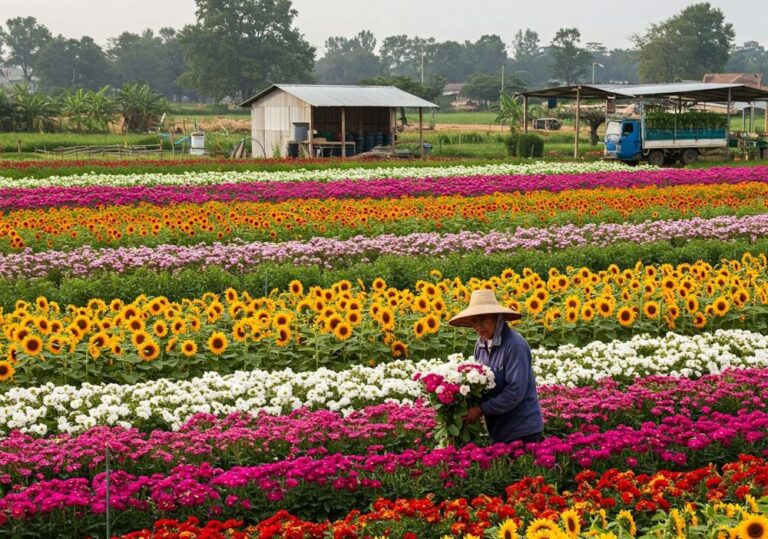Introduction to Heirloom Roses
Heirloom roses, often regarded as the treasures of the horticultural world, are cultivars with rich histories and remarkable attributes. Distinct from modern hybrids, these roses boast a unique character, often showcasing a blend of colors, forms, and scents that are rarely matched by their contemporary counterparts. Typically, heirloom roses refer to varieties that have been cultivated before the 20th century and have been preserved primarily for their ornamental and aesthetic value.
One of the hallmark features of heirloom roses is their diverse palette of colors, which ranges from deep reds and vibrant pinks to softer pastels and pure whites. Florists appreciate this extensive spectrum, as it allows for creative arrangements and bouquets tailored to various occasions. Furthermore, these roses often emit captivating fragrances that can evoke memories and emotions, adding an olfactory layer to floral designs.
Another significant aspect of heirloom roses is their historical significance. Many of these varieties have cultural ties and stories that enhance their appeal. For instance, some heirloom roses have been passed down through generations, embodying family histories and traditions. This connection resonates with consumers who value the narrative behind their floral choices, making heirlooms more than just plants but symbols of legacy.
The florist industry has seen a growing demand for heirloom roses due to their aesthetic and sentimental value. As consumers increasingly lean towards sustainable and locally sourced products, heirloom varieties present an attractive option for florists striving for quality and distinction in their offerings. Understanding these characteristics and the historical context surrounding heirloom roses is essential for anyone looking to delve deeper into their cultivation and marketing.
Choosing the Right Heirloom Varieties
Selecting the right heirloom rose varieties is pivotal for any florist aiming to capitalize on the unique characteristics and beauty these flowers offer. Heirloom roses are renowned for their historical significance and diverse traits, which often make them more appealing to consumers compared to modern hybrids. However, choosing the most suitable varieties requires careful consideration of climate, soil conditions, and market trends.
First and foremost, understanding your specific climate zone is essential. Heirloom roses thrive in various environments, but their success can vary significantly based on temperature, humidity, and local pest issues. For example, varieties like ‘Old Blush’ and ‘Madame Antoine Meilland’ are known for their resilience in warmer climates, whereas ‘Belle de Crecy’ can withstand cooler conditions. Conducting thorough research on which varieties are historically suited to your region will aid in cultivating a successful crop.
The soil in which the roses are planted also plays a crucial role in determining their health and productivity. Proper soil preparation ensures that nutrients are available, significantly influencing plant growth and flower quality. Conducting a soil test is the first step in identifying pH levels and nutrient deficiencies. Many heirloom varieties prefer rich, loamy soil that retains moisture, so you might consider organic matter amendments to enhance the growing medium.
Furthermore, it is imperative to stay updated on floristry trends to select varieties that will catch the eye of potential buyers. Researching popular heirloom roses like ‘Cecile Brunner’ or ‘Eden’ can inform your choices, as these varieties often feature unique color palettes and fragrances that florists frequently seek. By aligning your selection with market demands, you can maximize both sales and customer satisfaction.
Site Preparation and Soil Requirements
Preparing the site for growing heirloom roses is a critical step that can significantly influence the health and vibrancy of the plants. One of the foremost considerations in this process is selecting an appropriate location. Heirloom roses thrive in areas that receive full sunlight, ideally equating to at least six hours of direct sun exposure daily. This ensures the plants have sufficient energy for photosynthesis, leading to robust growth and prolific blooming.
Once the location is established, conducting a soil test is essential to ascertain the existing soil conditions. Understanding the pH level, nutrient content, and soil texture will enable growers to make informed decisions about necessary amendments. Ideally, heirloom roses prefer slightly acidic to neutral soil with a pH range of 6.0 to 7.0. Soil tests can be performed through local agricultural extensions or through DIY kits available on the market.
Improving soil quality is another vital aspect of preparing for heirloom rose cultivation. Incorporating organic matter, such as compost or well-rotted manure, enhances soil structure, boosts nutrient content, and improves moisture retention while promoting beneficial microbial activity. Ensuring the soil is well-draining is of the utmost importance, as heirloom roses are susceptible to root rot if water accumulates around their roots. A well-draining soil mix can be achieved by combining existing soil with coarse sand, perlite, or vermiculite, which facilitates adequate water movement and air circulation around the roots.
Creating an optimal growing environment through careful site preparation and soil enhancement will lay the groundwork for successful heirloom rose farming. By taking these steps, growers can foster a thriving ecosystem that supports healthy plants, ultimately leading to a bountiful flower harvest suitable for florist sales.
Planting Techniques for Success
Successfully planting heirloom roses requires attention to detail and an understanding of their unique growing requirements. First and foremost, selecting the right time for planting is crucial. The ideal planting season for heirloom roses is in the early spring or fall when temperatures are mild. This timing allows the plants to establish themselves before facing the stress of summer heat or winter cold.
When it comes to the planting depth, heirloom roses should be planted at a depth that accommodates their root system without burying the graft union, which is typically where the rose variety was grafted onto the rootstock. A general rule of thumb is to dig a hole that is about twice as wide and slightly deeper than the root ball. This promotes healthy growth, allowing the roots to spread easily into the surrounding soil.
Spacing is another essential factor in ensuring a thriving rose garden. It is advisable to space heirloom roses approximately 18 to 24 inches apart. This distance allows for adequate air circulation, reducing the risk of fungal diseases while enabling each plant to receive sufficient sunlight. Furthermore, proper spacing supports the overall health and productivity of the plants, contributing to a successful florist business.
Once planted, the importance of watering cannot be overstated. Newly planted heirloom roses benefit from deep, thorough watering sessions to encourage robust root growth. It is recommended to water them regularly for the first few weeks, gradually tapering off as they establish themselves. Additionally, applying a layer of mulch around the base of each plant not only conserves moisture but also suppresses weed growth, creating a healthier growing environment.
Watering and Fertilization Practices
Effective watering and fertilization are crucial for sustaining heirloom roses throughout their growing season. Heirloom roses are known for their unique beauty and fragrance, but they also require meticulous care to thrive. One of the fundamental aspects of growing these plants successfully is maintaining consistent moisture levels in the soil. It is essential to ensure that the soil is not overly dry, as well as not too saturated, as both conditions can stress the plants and impede their growth.
For optimal results, it is recommended to water heirloom roses early in the morning or late in the evening. This timing minimizes evaporation and allows the plants to absorb moisture effectively. A deep watering technique is advisable, where water penetrates the root zone adequately. A general guideline is to provide approximately one inch of water per week, adjusting based on weather conditions and the specific moisture retention capacity of the soil. Utilizing a drip irrigation system or soaker hoses can help direct water to the base of the plants, reducing wastage and preventing fungal diseases that can arise from wet foliage.
In terms of fertilization, choosing the right organic fertilizers plays a pivotal role in promoting healthy growth and abundant flowering. Organic options, such as compost or well-rotted manure, enhance soil structure and provide essential nutrients over time, fostering a balanced environment for the plants. Applying a balanced fertilizer with a ratio of 10-10-10 during the active growing season encourages robust growth and vibrant blooms. It is advisable to follow the manufacturer’s instructions regarding application rates and frequency to avoid nutritional deficiencies or excesses that can negatively impact the plants.
Overall, integrating proper watering methods and organic fertilization practices will create the ideal conditions for heirloom roses, supporting their vitality and aesthetic appeal throughout their lifecycle.
Pest and Disease Management
Heirloom roses are prized for their unique characteristics and fragrant blooms, making them a favorite among florists. However, managing pests and diseases is crucial to ensure their health and viability for sales. Common pests that can affect heirloom roses include aphids, spider mites, and beetles. These pests can lead to weakened plants and diminished flower quality. Regular monitoring of the plants is essential, as early detection can prevent significant damage.
One effective approach to managing pests organically is to introduce beneficial insects, such as ladybugs and lacewings, which can help control aphid populations. Additionally, maintaining plant health through proper watering and fertilization can enhance resilience against infestations. Employing physical barriers, such as row covers, can also protect plants from pests without the use of chemicals.
Diseases such as powdery mildew, black spot, and downy mildew can pose threats to heirloom roses. To minimize the risk of these diseases, it is important to ensure good air circulation around the plants by pruning overcrowded stems and removing debris that can harbor pathogens. Regularly inspecting plants for early signs of disease, such as discoloration or unusual spots on leaves, can facilitate early intervention.
When it comes to treatment, eco-friendly solutions such as neem oil or a mixture of water and baking soda can be effective in managing fungal diseases. These methods are not only safer for the environment but also maintain the quality needed for florist sales. Implementing a routine of observation and intervention will lead to stronger heirloom roses that can thrive and produce beautiful blooms, ultimately enhancing their appeal in the floral market.
Pruning Techniques for Maximum Blooms
Proper pruning is essential for enhancing the growth and blooming potential of heirloom roses, particularly for those cultivated for florist sales. Understanding the right techniques and timing will significantly impact flower production and overall plant health. The best time to prune heirloom roses generally falls in early spring when the threat of frost has subsided and new growth begins to emerge. This timing allows for optimal healing and sets the stage for vigorous growth throughout the blooming season.
When pruning, it is crucial to employ the correct types of cuts. Begin by removing any dead, diseased, or damaged wood, as these areas can hinder the plant’s growth and negatively affect bloom quality. Utilize clean, sharp pruning shears for precise cuts, making sure to cut just above a bud that faces outward to encourage growth away from the center of the plant. This practice helps in maintaining an open center, improving air circulation and reducing the risk of fungal diseases. In addition, it is advisable to eliminate any weak or spindly growth, focusing on encouraging strong, productive canes that will produce abundant blooms.
Thinning out the shrub can also enhance light penetration and airflow, which are essential for healthy growth. Aim to remove approximately one-third of the plant each year; however, this can vary based on the age and overall health of the rose bush. Regular maintenance and observation can reveal opportunities to refine the structure of the plant further, ensuring robust growth and maximum flowering potential. By mastering these pruning techniques, you will not only foster healthier heirloom roses but also boost their yield for commercial purposes, providing florists with stunning blooms that captivate their clients.
Harvesting and Handling Tips
Harvesting heirloom roses at the correct time is crucial for ensuring that they reach florists in optimal condition. The ideal moment to cut roses is in the early morning or late afternoon when the temperatures are cooler. This timing helps maintain the quality of the flowers and prevents wilting. It is important to harvest them just as they begin to open, characterized by a few petals starting to unfold. This stage indicates that the roses are mature enough for cutting and will continue to bloom beautifully in arrangements.
When it comes to the actual cutting technique, utilize sharp, clean pruners to make a clean cut at a 45-degree angle. This angle maximizes the surface area for water uptake and minimizes the chances of damage to both the rose stem and the plant itself. Be sure to cut the stems to a length suitable for florists’ needs, typically 12 to 18 inches, allowing for easy handling and arrangement by the florist. Handling the roses gently during and after cutting is essential to avoid bruising and damaging the delicate petals.
Post-harvest care plays a vital role in extending the vase life of heirloom roses. Immediately after cutting, place the roses in a bucket of water to prevent them from drying out. It is recommended to use a hydration solution or a flower food mix to nourish the flowers further. Conditioning the flowers involves removing any leaves that may be submerged in water, as these can lead to bacterial growth. After letting the roses hydrate for a few hours, additional trimming of the stems should be done before they are arranged or packed for delivery. Following these best practices will help ensure that heirloom roses remain vibrant and appealing for florists, enhancing their sales potential.
Marketing Heirloom Roses to Florists
Marketing heirloom roses to florists involves a nuanced understanding of both the product and the target audience. Florists often seek unique and high-quality flowers that can enhance their arrangements and attract clientele. To effectively connect with florists, it is essential to establish strong relationships with them. Begin by visiting local floral shops, engaging in conversations about their needs, and showcasing samples of your heirloom roses. Attending local flower shows or industry events can also provide valuable networking opportunities, allowing you to build a rapport with potential buyers.
Understanding florist preferences is key to successful marketing. Conduct research to determine which heirloom rose varieties are popular in your area, and identify the colors and types that florists prefer for their arrangements. Keep an ear to the ground regarding current floral trends, as these can impact purchasing decisions. Once you have gathered this information, tailor your offerings to meet the specific needs of your florist partners.
Showcasing the unique qualities of heirloom roses is vital in attracting attention. Highlight their distinctive characteristics, such as fragrance, color variations, and historical significance. Providing florists with educational materials about the benefits of using heirloom roses—such as their longevity and sustainability—can further entice them to choose your flowers over more common varieties. Additionally, consider creating visually appealing promotional materials that display your products in beautiful arrangements, emphasizing their unique aesthetics.
Pricing your heirloom roses appropriately is also crucial. Research competitors and ensure that your prices reflect the quality and rarity of your flowers while remaining competitive. Consider offering introductory discounts or bundle deals for first-time buyers to entice florists to try your product. Effective branding and consistent promotion across social media platforms can elevate awareness of your heirloom roses, engaging florists and encouraging them to include these exquisite flowers in their offerings.





